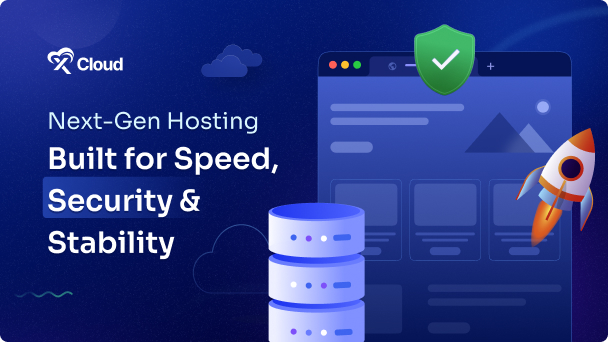As cyber threats become a growing concern, the urgency to maximize your VPS security (Virtual Private Server) against potential vulnerabilities has never been more critical. Ensuring secure VPS hosting is not just about safeguarding data, it is about ensuring continuity, reliability, and trust in the services you provide. This necessity exceeds the traditional boundaries of web service providers, becoming a major concern for both businesses and individuals.

This guide will guide you through understanding the crucial know-how of VPS, pinpoint the most common VPS vulnerabilities, and underline the importance of enhancing your VPS security. Additionally, you will discover over ten actionable tips to maximize your VPS security, transforming it into a protected VPS solution. Each recommendation is designed to maximize your VPS security against a range of threats, ensuring that your VPS security measures are robust, resilient, and up-to-date.
💡 Virtual Private Server: The Know How
A Virtual Private Server (VPS) is essentially a virtual machine provided as a service by an internet hosting service. It operates its own version of an operating system (OS), and you, as the customer, have user-level access, allowing the installation of nearly any software that the OS supports. Functionally, it is comparable to a dedicated physical server but is software-defined, which simplifies creation and configuration.
The global virtual private server market size reached US$ 4.5 Billion in 2023. Looking forward, IMARC Group expects the market to reach US$ 13.3 Billion by 2032, exhibiting a growth rate (CAGR) of 12.4% during 2024-2032. This surge is driven by increasing demands across various sectors, including financial services, healthcare, and IT, among others.
Moreover, the adoption of server virtualization technology divides a single physical server into multiple isolated virtual servers. This is facilitated by a hypervisor, a software layer that allocates resources dynamically, enhancing the efficiency of resource use and enabling quick setup or cloning of servers.
🛡️ Most Common Vulnerabilities & Why to Maximize Your VPS Security
Your Virtual Private Server (VPS) might be vulnerable to a range of threats that can compromise its security and functionality. Among the most prevalent threats are Distributed Denial-of-Service (DDoS) attacks, which can mess up your server with excessive traffic, leading to crashes or downtime. Malware, including Trojans, ransomware, and spyware, can infect your system, causing data loss and disruption.
Phishing attacks are equally dangerous, tricking users into divulging sensitive information, which can lead to unauthorized access. Additionally, brute-force attacks attempt to crack passwords through relentless trial and error, posing a significant risk to your server security. Other notable vulnerabilities include SQL injections, Cross-site Scripting (XSS), and more. On top of that, poor function-level control and broken authentication can also provide hackers with unauthorized access, further endangering your VPS.
If you want to stop a range of cyber threats that could compromise your virtual infrastructure, you must maximize your VPS security. With cyber-attacks occurring every 39 seconds on average, the potential for unauthorized access and data breaches is alarmingly high.
Moreover, security breaches can have severe financial implications. The theft of personal and financial information can result in hefty losses and damage your business’s reputation, potentially leading to legal consequences. Once you maximize your VPS security by implementing comprehensive security measures, you can safeguard your and your customers’ data against evolving cyber threats.
💡 Maximize Your VPS Security: A Comprehensive Guide (10+ Tips)

This guide equips you with some essential tips to maximize your VPS security in 2025 and beyond. By following these best practices, you will create a robust and secure environment for your virtual server.
📌 Fortify Logins with Uncrackable Passwords
Construct intricate passwords with a minimum length of 12 characters. For that, you can weave together uppercase and lowercase letters, numbers, and special symbols (@, #, $, etc.) for maximum complexity. You can also use a password manager to generate and store strong, unique passwords for each account. However, it is best if you update your password every 3 months to stay ahead of potential threats.
📌 Disable Root Login & Use Separate Admin User
Disabling the root account significantly reduces the attack surface, as it is a prime target for hackers. You can create a dedicated administrative user with restricted privileges for essential tasks. Additionally, you can also utilize the ‘Sudo’ command to elevate privileges when necessary for this user.
📌 Change the Default SSH Port
The default SSH port (22) is a frequent target for automated attacks. Modify the SSH port to a less common, high-numbered option (e.g., 49152) to deter automated scripts. It will eliminate the common port attacks.
📌 Implement Multi-Factor Authentication (MFA)
Do not reuse passwords across different platforms. A data breach on one site can compromise others. Fortify your defenses with MFA, requiring a secondary verification step (e.g., code from a mobile app or email) for logins.
📌 Leverage SFTP over FTP for File Transfer
Ditch the outdated File Transfer Protocol (FTP) as it transmits data in plain text, making it vulnerable to interception. Instead, you can use Secure File Transfer Protocol (SFTP), which encrypts data in transit, ensuring confidentiality.
📌 Plan & Automate Regular Backups
Schedule automated backups at regular intervals (daily or weekly) to a separate location (e.g., cloud storage) in case of data loss. Plus, implementing a versioning system helps maintain previous backups for rollback capabilities.
📌 Utilize Firewalls to Monitor Traffic
Configure firewalls to act as guardians, filtering incoming and outgoing traffic. You can also establish rules to block suspicious activity and unauthorized access attempts.
📌 Select a Reliable Hosting Company
When choosing a VPS provider, prioritize companies like xCloud Host with a proven track record of robust security measures. Look for features like data center security, DDoS protection, and disaster recovery plans.
📌 Conduct Vulnerability Scans & Audits
Regularly conduct vulnerability scans to identify weaknesses in your system and software. Schedule periodic security audits by qualified professionals for a comprehensive assessment.
📌 Implement File Permissions
Assign appropriate read, write, and execute permissions for files and directories. This ensures that only authorized users can access and modify sensitive data.
📌 Use Fail2Ban & Other Brute-Force Tools
Utilize Fail2Ban, a security tool that monitors login attempts and blocks suspicious IP addresses after a predefined number of failed attempts. This safeguards your VPS from brute-force attacks.
📌 Choose a Secure VPS Management Tool
Select a VPS management tool like xCloud offering robust security features like user activity logs and intrusion detection. This streamlines secure server management.
🚀 Maximize Your VPS Security & Scale Business
Solidifying your VPS in 2025 is no longer optional, it is a critical necessity. By following the actionable tips outlined in this guide, you can maximize your VPS security, transforming it into a secure solution. This way, you can also safeguard your valuable data and ensure the uninterrupted operation of your services.
For additional security measures and advanced VPS management solutions to further maximize your VPS security, consider exploring the security options provided by xCloud Host. If you have found this blog helpful, feel free to subscribe to our blogs for valuable tutorials, guides, knowledge, and tips on web hosting and server management. You can also join our Facebook community to share insights and engage in discussions.
Frequently Asked Questions (FAQs)
1. What are some effective methods to harden a VPS?
To enhance the security of your Linux VPS, consider these 15 strategies: choose a secure hosting provider, implement a strong password policy, disable root logins, use SSH keys, change the default SSH port, disable unused network ports, remove unnecessary modules and packages, and install a robust firewall.
2. How can one optimize a VPS server for better performance?
Optimizing a VPS involves several key actions: keep the server software up-to-date, update and optimize the database, use a Content Delivery Network (CDN), implement content caching, employ a reverse proxy, utilize a load balancer, install a VPS monitoring tool, and minimize the code on your website.
3. What are the best practices for protecting a VPS server?
To protect your VPS effectively, adhere to these best practices: configure firewall filtering and restrict open ports, implement DDoS protection, regularly update and patch the VPS, enhance SSH security, monitor and audit the VPS regularly, use Secure File Transfer Protocol (SFTP), install SSL certificates, and disable root login.
4. How can VPS security be improved?
Improving VPS security can be achieved by implementing strong passwords, keeping the operating system updated, periodically updating software, controlling user access, disabling root login, monitoring server logs, ensuring protection against malware, and disabling unused network ports.







































